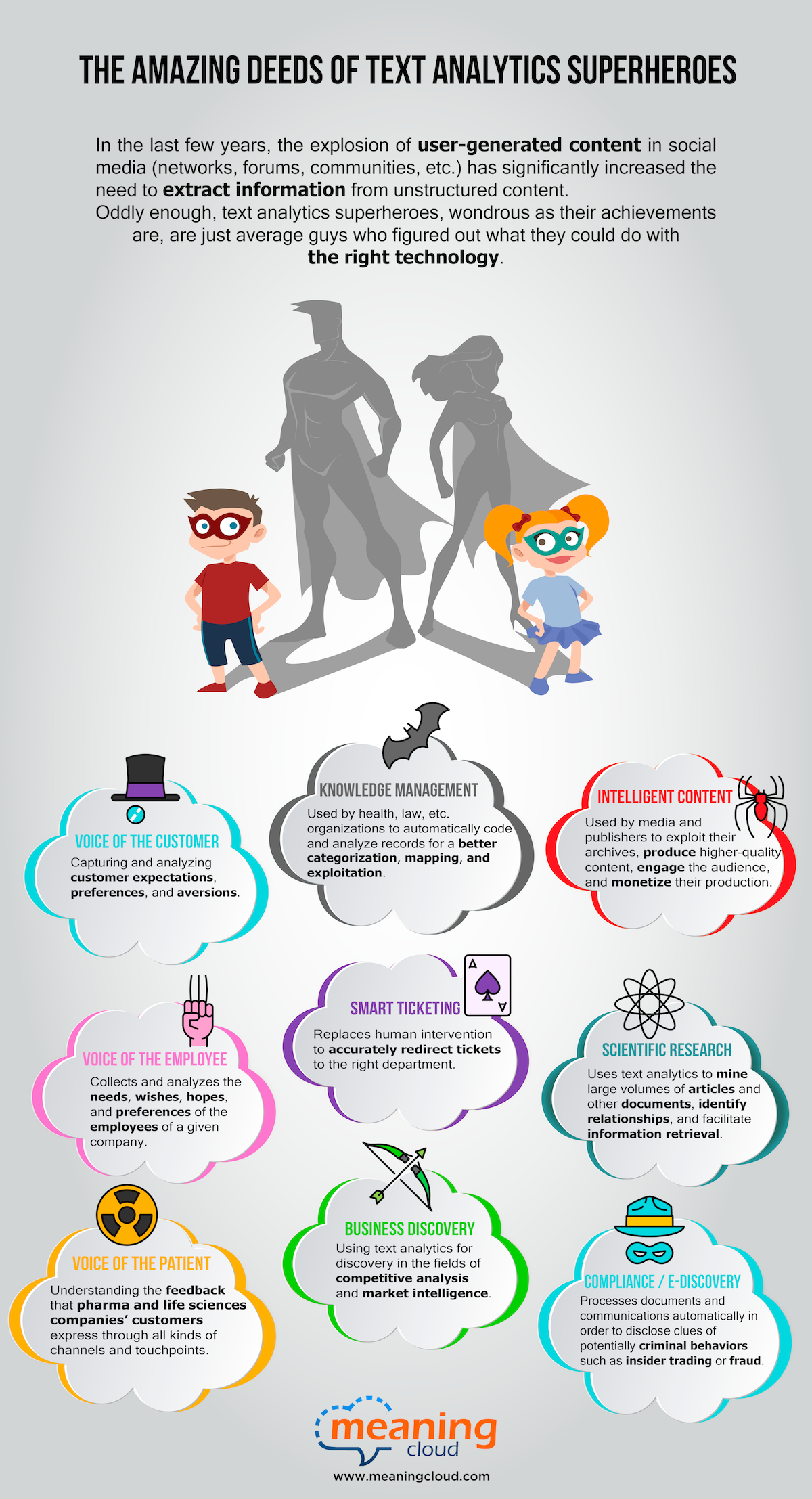In the last few years, the explosion of user-generated content in social media (networks, forums, communities, etc.) has significantly increased the need to extract information from unstructured content. Oddly enough, text analytics superheroes, wondrous as their achievements are, are just average guys who figured out what they could do with the right technology.

Voice of the Customer: capturing and analyzing customer expectations, preferences, and aversions.
Knowledge management: used by organizations in the areas of health, law, etc. to automatically code and analyze records for a better categorization, mapping, and exploitation
Intelligent content: used by media and publishers to exploit their archives, produce higher-quality content more quickly, engage the audience through personalized content, and monetize their production through targeted advertising and new business models
Voice of the Employee: collects and analyzes the needs, wishes, hopes, and preferences of the employees of a given company
Smart Ticketing: replaces human intervention to accurately redirect tickets to the right department
Scientific research: uses text analytics to mine large volumes of articles and other documents, identify relationships, and facilitate information retrieval
Voice of the Patient: listening and understanding the feedback that current and potential customers of pharmaceutical and life sciences companies express through all kinds of channels and touchpoints
Business discovery: using text analytics for discovery in the fields of competitive analysis and market intelligence.
Compliance and eDiscovery: processes documents and communications automatically in order to disclose clues of potentially criminal behaviors such as insider trading or fraud.











